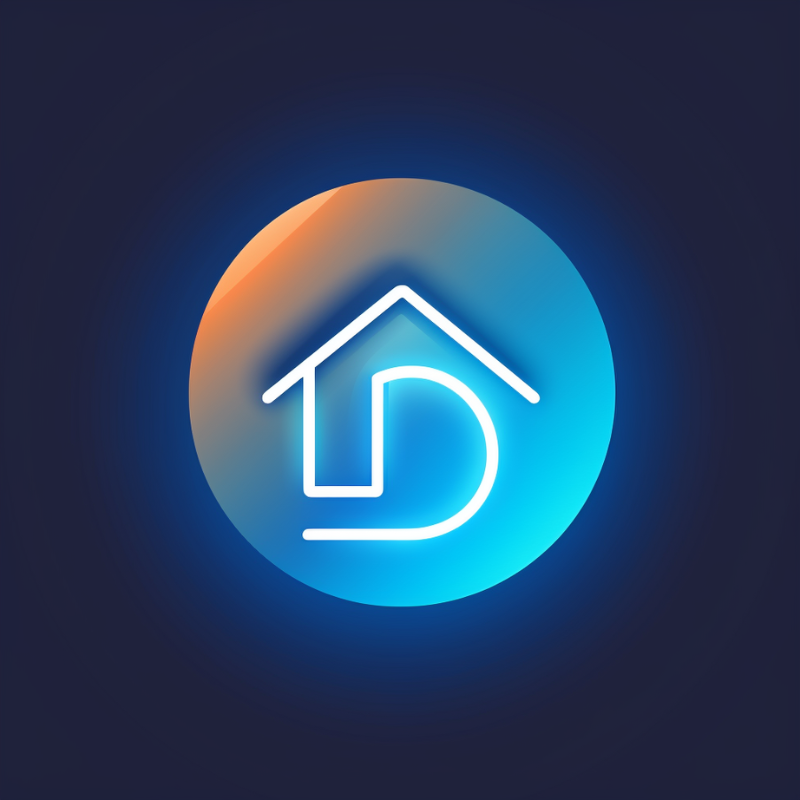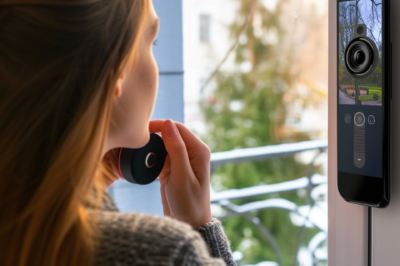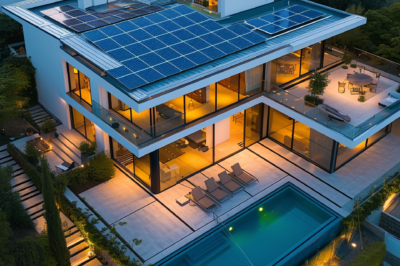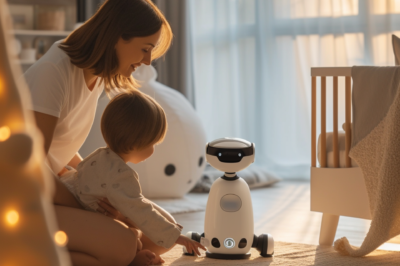
Smart Set-Up Considerations for Tenants
-
Wireless smart devices are renter-friendly and can be taken with you when you move.
-
Smart devices can be installed in houses or apartments.
-
Smart lighting can help save on your energy bills in a rental property.
-
Voice assistants can centralize control of your smart home devices for ease of use.
-
Smart security devices like cameras and locks offer peace of mind without permanent installation.
-
Smart plugs can turn almost any appliance into a smart device, automating your home with minimal cost.
Smart Living on a Budget: Renters’ Guide
So you’re renting and you want to enter the smart home world without breaking the bank or your lease agreement? Good news: you’ve got plenty of options. The key is to focus on smart devices that offer flexibility, affordability, and portability. Let’s walk through how to select the perfect tech for your rental space that won’t upset your landlord or deplete your savings.
How Can I Ensure My Smart Home Setup Is Portable?
To ensure your smart home setup is portable, choose devices that:
-
Do not require permanent installation or hardwiring.
-
Can be easily disconnected and reconnected at a new location.
-
Have a standardized setup process that doesn’t rely on the specific layout or infrastructure of your current home.
This way, when it’s time to move, you can simply pack up your devices and set them up again in your new place.
Do I Need My Landlord’s Permission for Every Smart Device?
Not for every device, but it’s good practice to inform your landlord about any significant changes to the property, especially if they involve security devices like cameras. For non-invasive devices like smart bulbs and plugs, you typically won’t need permission. However, for anything that requires installation or a change to the property’s infrastructure, always get your landlord’s approval first.
Quick Tips for Starter Smart Homes
Starting your smart home doesn’t have to be overwhelming. Start small and learn as you go. A few smart bulbs, a voice assistant, and maybe a smart plug or two can already make a huge difference. Here’s how to get going:
-
Identify what you want to control or automate first, like lighting or appliances.
-
Choose devices that are easy to set up and don’t require permanent changes to your rental.
-
Look for products that can communicate with each other for a more integrated experience.
-
Select a Hub which is compatible with multiple brands.
Key Considerations Before Purchasing
Before you pull out your wallet, take a moment to consider compatibility with your current devices, ease of installation, and the flexibility to take the devices with you when you move. Also, keep an eye on the product reviews and warranties. Let’s get started.
Wireless Wonders: Non-Permanent Smart Solutions
Wireless devices are the bread and butter of renter-friendly smart homes. They’re easy to install and even easier to take with you when you move. Plus, they often come with the added bonus of being controlled by your smartphone or voice assistant.
Advantages of Going Wireless
Wireless tech means no holes in the walls or complicated wiring. This is great for renters because:
-
There’s no need to alter the property’s infrastructure.
-
You can easily expand your system as new devices come out.
-
Setup is usually straightforward — often just plug and play.
Top Wireless Devices to Start Your Smart Home
Ready to start shopping? Here are some devices that should be at the top of your list:
-
Smart Bulbs: Swap out traditional bulbs for smart ones to control lighting from your phone or with your voice.
-
Smart Plugs: These nifty gadgets can make any appliance smart. Plug in your coffee maker and schedule it to brew your coffee every morning without lifting a finger.
-
Smart Speakers: A voice assistant can control your devices such as televisions, play music, and even tell you the weather. Don’t like the playlist when your out by the BBQ? Change it with your phone or voice without moving. That’s convenient.
Remember to check compatibility. You want devices that can talk to each other. Otherwise, you’ll end up with a bunch of smart devices and still have to manage them separately, which is the opposite of smart.

Combining Devices for Seamless Control
Now that you’ve got an idea of what’s available, let’s talk about making them work together. The goal is to create a symphony, not a solo act. By combining devices, you can create scenes or routines. Saying “Goodnight” to your voice assistant turns off the lights, lock the doors, and set the thermostat to your preferred sleeping temperature—all at once. That’s smart.
Keep Watch, Effortlessly: Smart Security Picks
Example: Sam’s apartment has a no-drill policy, but he still wanted a smart security camera. He opted for a wireless camera with a rechargeable battery that he could mount with adhesive strips. Now, he can check on his apartment from his phone, no matter where he is.
Security is a top priority for most renters, and smart technology has made it easy to keep an eye on your place. You don’t need a complex, wired system to feel safe. There are plenty of non-permanent solutions that provide peace of mind and require zero drilling.
For instance, smart cameras can be placed on shelves or mounted with removable adhesive. Video doorbells can often be installed over the existing peephole or simply placed on a nearby surface. These devices connect to your Wi-Fi network, allowing you to monitor your home from anywhere with your smartphone.
Because these devices are wireless, they’re not only easy to install but also to remove and take with you when you move. Just make sure to charge the batteries and keep the software updated for the best performance.
Doorbell Cameras and Smart Locks
When it comes to smart security, doorbell cameras and smart locks make securing your home easy. They’re the dynamic duo of home security for renters. A smart lock can often fit over your existing deadbolt, meaning no changes to the lock itself. And doorbell cameras can give you a live feed of who’s at your door, even when you’re not home.
Sharing the premises? No problem as all residents can have their own logins, making it easy to remove somebody when they move out. No more handing back keys or changing locks.
Remote Monitoring Made Easy
Example: Lisa was on vacation when her smart security system alerted her to movement at her back door. She was able to view the live feed, see it was just a neighbor returning a borrowed item, and remotely disarm the alarm. Crisis averted, all from the beach.
With smart security, you can get alerts on your phone if there’s unexpected movement or someone rings your doorbell. You can check in on your home with live video feeds and even communicate with visitors through two-way audio, from anywhere in the world, as long as you have an internet connection.
Smart security gives you peace of mind. Forgot to lock the door on your way out? No problem. With a smart lock, you can lock (or unlock) your door from your phone. It’s that easy.
And remember, always choose devices with strong security features to protect your privacy and data. Look for options with encryption and the ability to update passwords regularly.
Plug In, Power Up: Smart Plugs and Outlets
Smart plugs are gaining ground. They’re small, they’re inexpensive, and they pack a punch when it comes to making your home smarter. Simply plug one into an existing outlet, then plug your lamp, fan, or coffee maker into the smart plug. Voilà! You’ve just made your appliance smart.
Transforming Appliances into Smart Gadgets
With smart plugs, you can:
-
Set schedules for your devices to turn on or off.
-
Control appliances remotely via your smartphone.
-
Make your home more energy-efficient by turning off devices when they’re not in use.
You can set schedules for your commonly used appliances. Wake up to the aroma of freshly brewed coffee every morning, or come home to a well-lit house on a winter night. These small conveniences can make a big difference in your daily routine.
Automate Your Home with Smart Plugs
Automation is all about an easier life. You can set smart plugs to turn on your lights at sunset or power down your gaming console when it’s time for bed. The possibilities are endless, and the setup is so simple, a 12-year-old could do it. Just plug it in, connect it to your Wi-Fi, and start controlling your home with your phone or voice.

Cool Control: Smart Thermostats and Cooling Systems
Keeping your rental at the perfect temperature can be a challenge, but smart thermostats are here to help. They learn your schedule and adjust the temperature accordingly, saving energy and money. And for those hot summer days, or chilly nights portable air conditioners with smart capabilities can be a renter’s best friend.
Smart thermostats can be used in most rentals, as long as you have access to the thermostat and it’s compatible with your HVAC system. They’re typically easy to install and even easier to use. Plus, you can control them from anywhere with your smartphone, ensuring you never come home to an oven or an icebox again.
What’s more, smart thermostats often provide reports on your energy usage, helping you to further optimize your heating and cooling and reduce your carbon footprint.
Portable AC Units with Smart Capabilities
If you don’t have central air, or you’re looking to cool a specific room, a portable AC unit with smart features is a great option. These units can be controlled via an app, allowing you to turn them on before you head home, ensuring you arrive to a cool and comfortable space.
And since they’re portable, you can move them to wherever you need them most, whether that’s the bedroom at night or the living room during the day. Just roll it to the right spot, plug it in, and chill out—literally.
Clear the Air: Smart Detectors and Sensors
Last but not least, let’s talk about safety. Smart smoke detectors and carbon monoxide detectors can alert you on your phone if there’s a problem, which is a big step up from the standard beeping we’re all used to. And water leak detectors can save you from coming home to a flood and the hefty repair bill that comes with it.
Smoke, CO, and Water Leak Detection
Smart detectors are easy to install—often just a matter of peeling and sticking—and they can provide real-time alerts to your phone. Some even offer the ability to silence false alarms from your phone, so no more climbing on chairs to hit the snooze button on your smoke detector.
And because these devices are smart, they can often self-test and remind you when it’s time to replace the batteries, ensuring they’re always ready to protect you and your home.
Benefit of Real-Time Alerts
Real-time alerts keep you aware of your home, even when you aren’t there. They mean you’re always in the loop, whether it’s a door that’s been left ajar, a detected motion in your living room, or smoke in your kitchen. You’ll get a notification straight to your phone, so you can take immediate action, even if you’re miles away.
Maintaining Renters’ Rights: What To Avoid
It’s crucial to maintain your rights as a renter while enjoying the benefits of smart technology. That means being mindful of your rental agreement and avoiding any tech that requires permanent changes to the property. Stick to non-invasive options that offer the same level of convenience without the risk of losing your security deposit.
To protect your deposit, opt for smart home devices that don’t require drilling, wiring, or any other permanent alterations. Wireless devices, smart bulbs, and freestanding cameras are all great examples. If a device seems like it might leave a mark, it’s probably best to steer clear or discuss it with your landlord first.
Additionally, when setting up your devices, make sure to follow all the manufacturer’s instructions to avoid any damage. For example, when mounting a camera or a sensor, use removable adhesive strips that are designed to come off cleanly without peeling the paint.
Lease-Friendly Upgrades
Lease-friendly upgrades are those that improve your quality of life without breaching your rental agreement. These include:
-
Smart thermostats that can be easily removed and replaced with the original upon moving out.
-
Portable air conditioning units with smart features for those hot summer days.
-
Battery-powered security cameras that you can place on a shelf instead of mounting to the wall.
Always remember to keep any original fixtures you replace, so you can restore the property to its original condition when your lease is up.
Frequently Asked Questions (FAQ)
Can I Install a Smart Thermostat in My Rental?
Yes, you can install a smart thermostat in most rentals, but it’s essential to get your landlord’s permission first. Most smart thermostats are easy to install and remove, so they’re a great option for renters looking to save on energy costs and add a bit of convenience to their home.
Are Smart Security Systems Allowed in Apartments?
Many smart security systems are allowed in apartments, as long as they don’t require permanent installation. Options like freestanding cameras or doorbell cameras that can be hung over the door without screws are usually acceptable. However, it’s always best to check with your landlord before installing any security system.
What Are the Most Cost-Effective Smart Devices?
The most cost-effective smart devices are those that offer significant convenience and energy savings for a minimal investment. Smart plugs, smart bulbs, and smart power strips are excellent examples. They’re relatively inexpensive, easy to install, and can help reduce your electric bill by allowing you to control and automate your devices.



